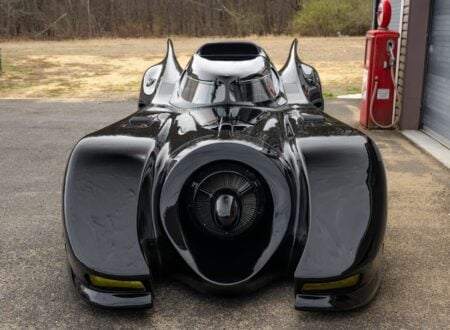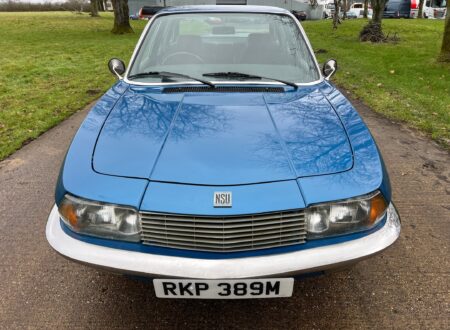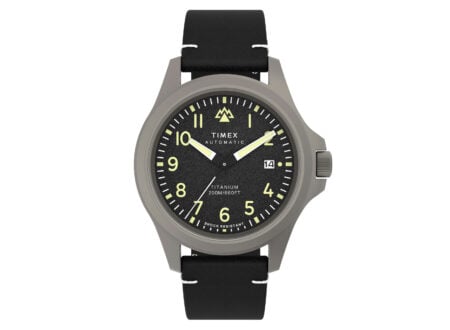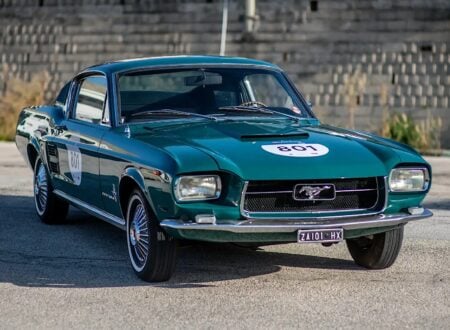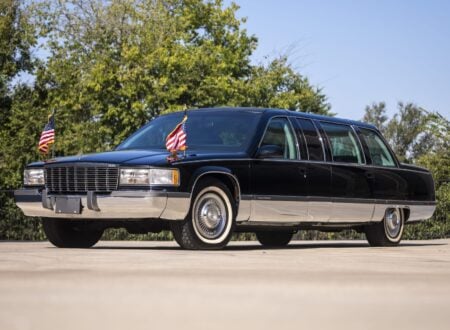This is the 1981 Wolfrace Sonic, it’s a twin v8-powered, six-wheeled, all-wheel-drive custom car that caused a sensation when it debuted in the United Kingdom back in the early 1980s.
Amazingly, the car was fully road-legal. It was designed and built as a promotional tool for a new line of “Sonic” alloy wheels from the company Wolfrace, and it was likely inspired to some degree by the legendary six-wheeled Tyrrell P34 Formula 1 car from 1976-1977.
Fast Facts: The 1981 Wolfrace Sonic
- The 1981 Wolfrace Sonic was a one-off, six-wheeled concept car built to promote Wolfrace Wheels’ new “Sonic” alloy wheel line. Commissioned by company director Barry Treacy and designed by custom builder Nick Butler, it was powered by twin 3.5 liter Rover V8 engines delivering a combined 400 bhp through all six wheels.
- Constructed on a tubular steel chassis using Jaguar E-Type and Triumph Dolomite parts, the Sonic used Lockheed ventilated discs with Tyrrell four-pot calipers. Its body combined aluminum and fiberglass panels, with powered canopy openings instead of doors and Wolfrace’s own alloys – twin 13-inch sets at the front and 15 inch rears.
- The cockpit was futuristic for the time, housing dual instrument clusters to monitor both engines and extensive electronics that gave a jet-inspired look. Originally budgeted at £29,000, the build reportedly surpassed £75,000 and possibly reached £100,000 – over half a million in today’s money. Fully road-legal under UK registration YNK 135X, it drew major crowds at 1981 motor shows.
- After years out of sight, the Sonic re-emerged in the 2010s and sold on eBay in 2015 for £18,100. A restoration began under specialist Trevor Farrington, reaching roughly 90% mechanical completion with over £100,000 invested. The car is now set for auction with Historics Auctioneers, estimated between £80,000 and £120,000.
History Speedrun: The Wolfrace Sonic
The Wolfrace Sonic is remembered today as one of Britain’s boldest and wildest concept cars of the 1980s – a six-wheeled, twin-engine machine built not by a major automaker, but by an alloy wheel company looking to make headlines. It succeeded in no uncertain terms.
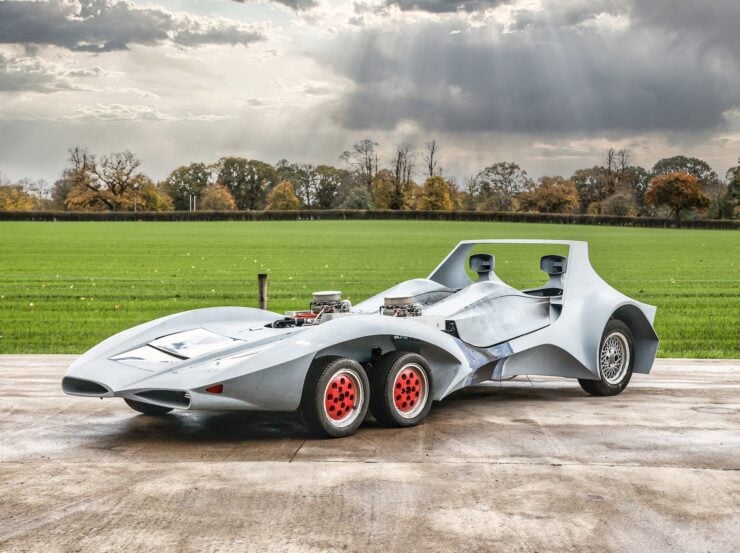

The Wolfrace Sonic was commissioned in 1981 by Barry Treacy, the managing director of Wolfrace Wheels, as a promotional centerpiece to launch the firm’s new “Sonic” wheel design. The brief was simple – build something that would draw crowds, stop journalists in their tracks, and make Wolfrace synonymous with high-end British automotive engineering.
To bring the car to life, Treacy turned to designer and engineer Nick Butler, a well-known custom builder with a background in precision fabrication. Butler sketched out a futuristic wedge-shaped coupe that looked like it just rolled off the set of the latest big budget Hollywood sci-fi film.
The Sonic was built around a custom tubular steel space-frame chassis, with some parts sourced from Jaguar and Triumph models – the rear end borrowed from an E-Type, while the front used Triumph Dolomite uprights.
Braking was handled by 10-inch Lockheed ventilated discs with Tyrrell four-pot calipers. Power came from twin Rover 3.5 liter V8s, one driving the front set of wheels, the other the rear. Each engine produced roughly 200 bhp, giving the Sonic a combined output of around 400 bhp.
The car’s proportions were theatrical to say the least, even by show-car standards. It sat low and wide with three axles, wearing Wolfrace’s new Sonic alloy wheels front and back – twin pairs of 13 inch wheels up front and a pair of 15 inch wheels at the rear – and it had an aluminum and fiberglass body with electrically operated cockpit fairings instead of conventional doors.
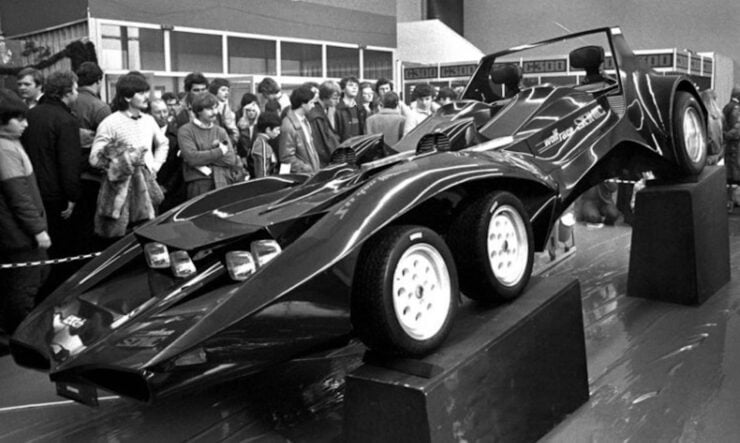

The cabin was fitted with twin instrument clusters and extensive electronics for monitoring both engines, a deliberate move to ensure the dashboard was almost jet-fighter-like in its complexity. Butler and his small team spent months fabricating every detail by hand, and while the original budget was £29,000, the final cost reportedly exceeded £75,000.
Some later accounts claiming a final cost closer to an even £100,000, this works out to £388,880 in 2025 terms, or $518,000 USD – over a half a million.
Unveiled at British motor shows in 1981, the Sonic was an absolute sensation. It toured exhibitions, appeared at promotional events, and even carried a valid UK road registration (YNK 135X), proving it was road-legal despite its futuristic, otherworldly form.
After its publicity run, the Sonic was sold in the 1990s to a private collector and it soon disappeared from the public eye. It resurfaced occasionally – notably appearing in online listings and automotive features – and eventually sold on eBay in 2015 for £18,100.
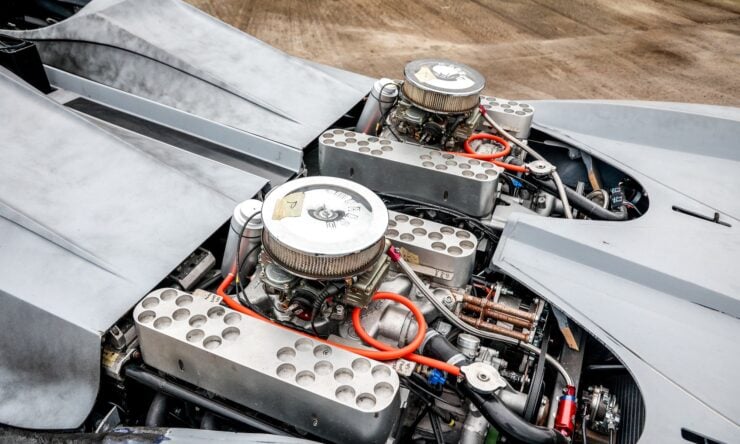

By the mid-2010s, it required restoration, and a later owner commissioned specialist Trevor Farrington to begin a complete rebuild. As of 2025, that restoration remained about 90% mechanically complete, with over £100,000 reportedly invested.
The car is now due to be auctioned by Historics Auctioneers in late-November with a guide price of £80,000 to £120,000 in the hopes that it will be bought by someone who can have the restoration finished off, and return the car to its former glory. If you’d like to read more or register to bid you can visit the listing here.
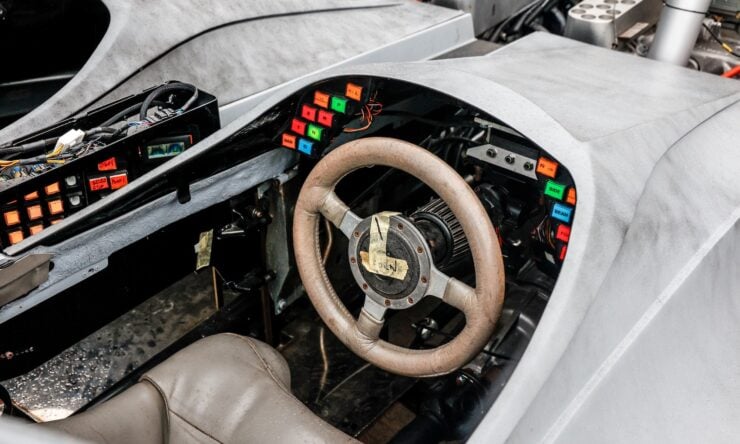


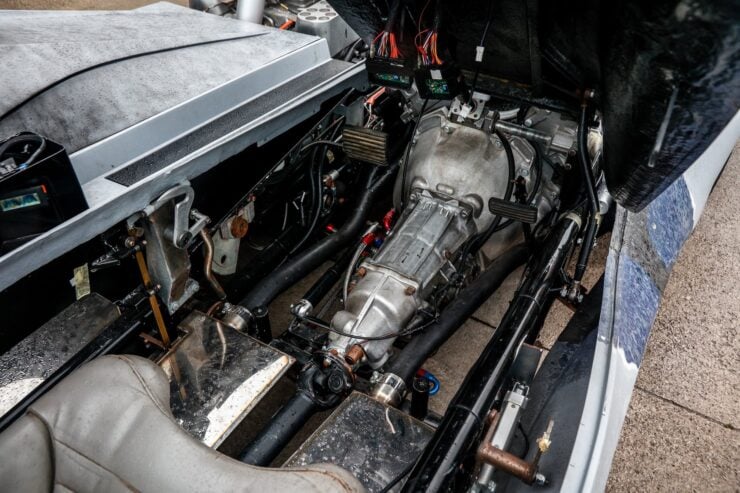
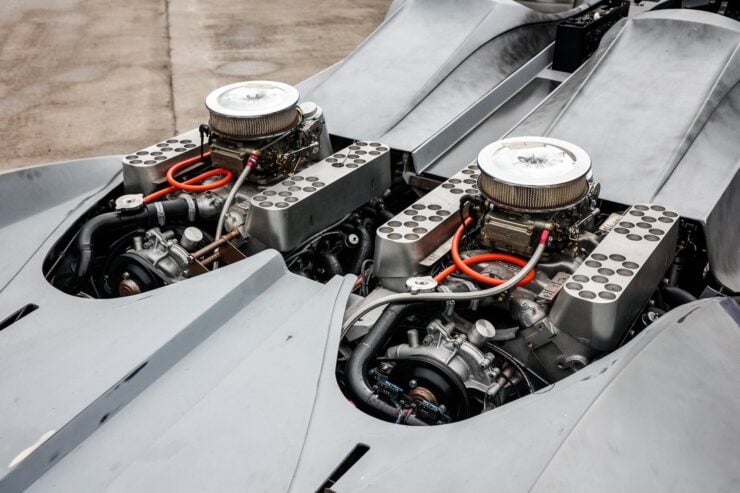

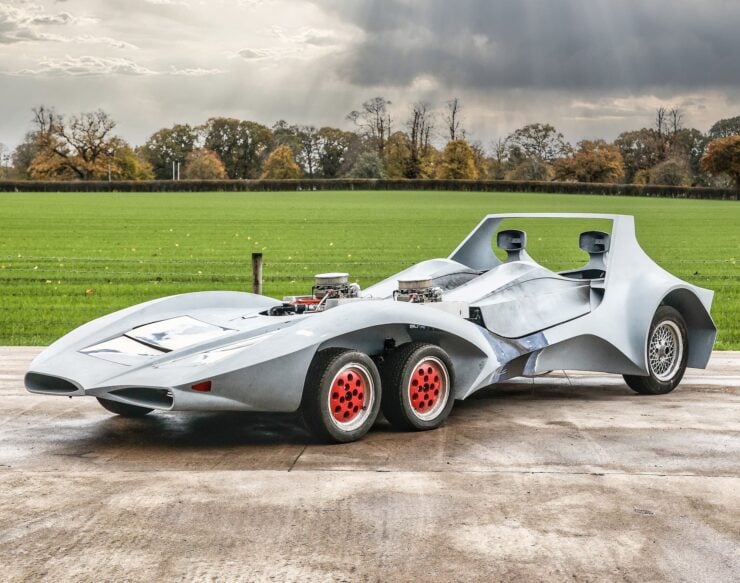

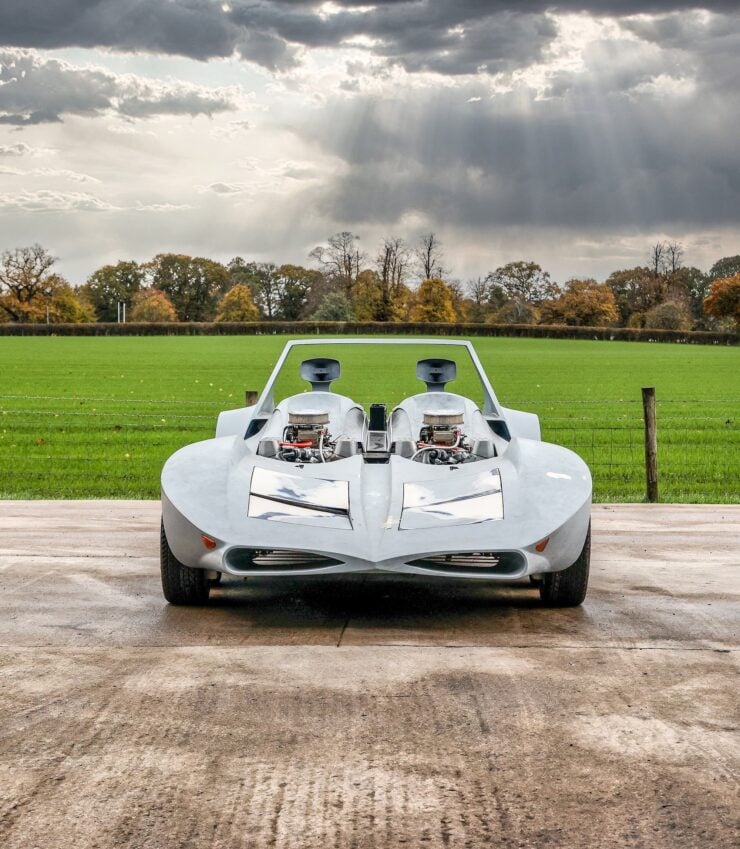


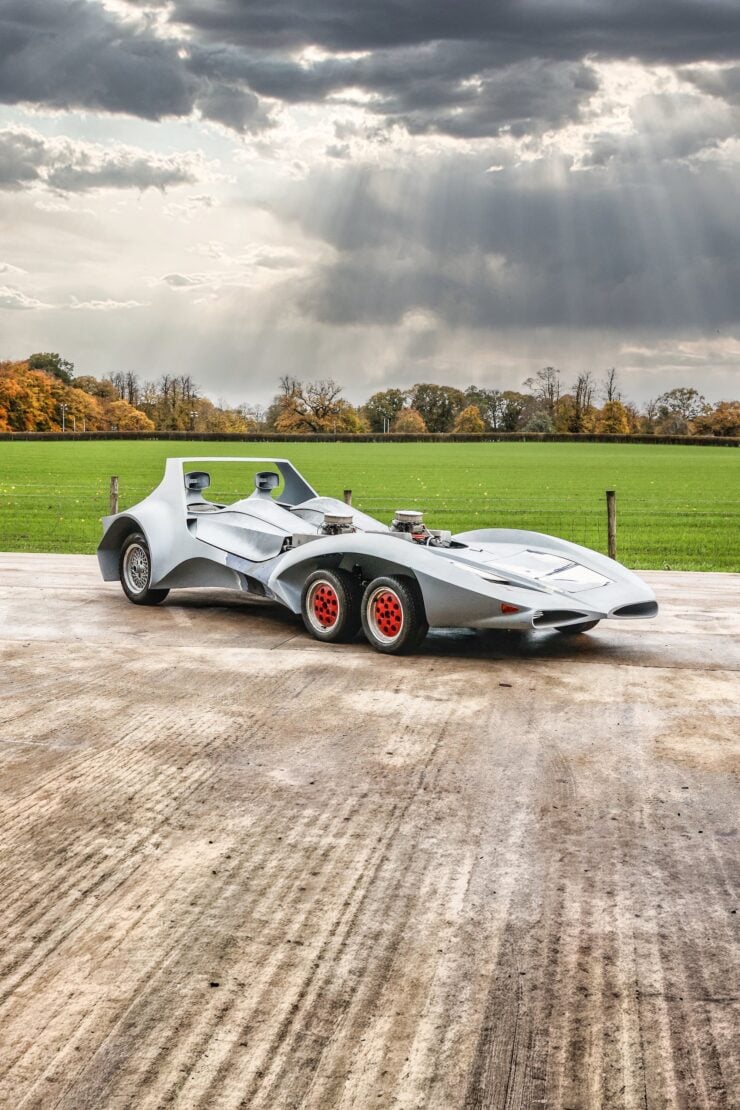
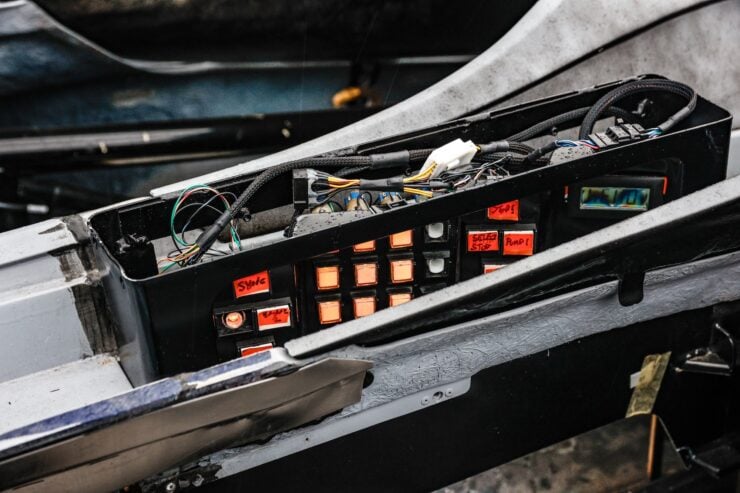
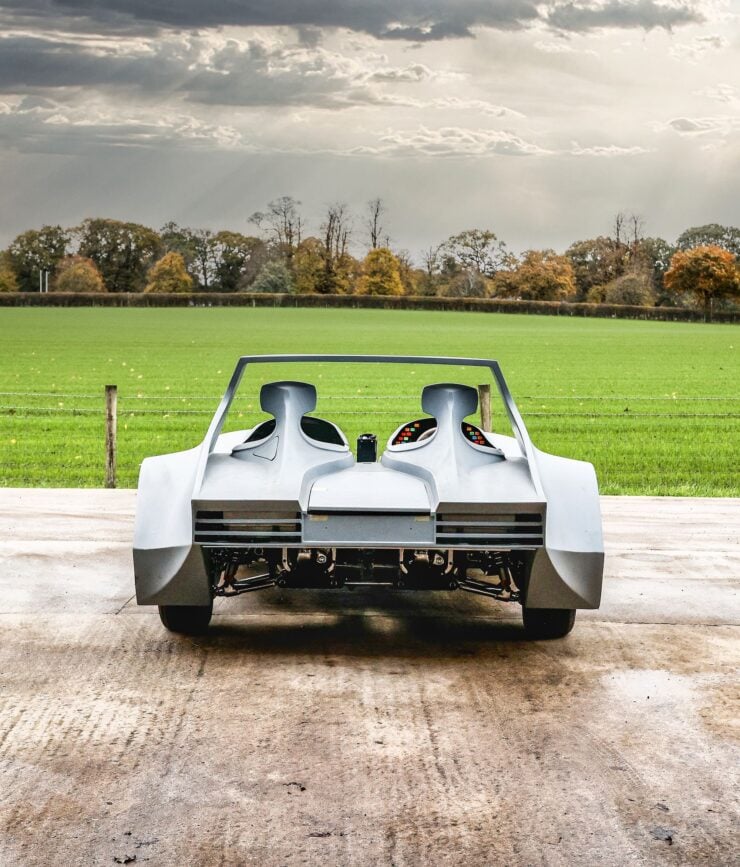
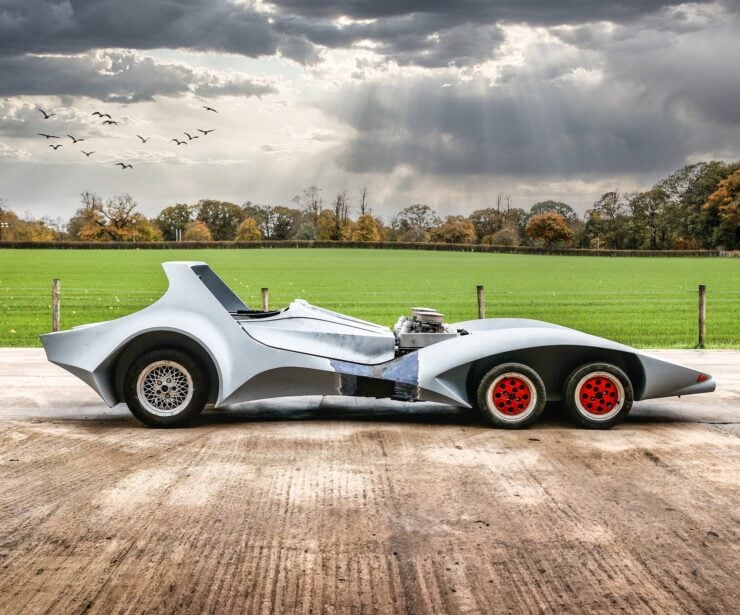


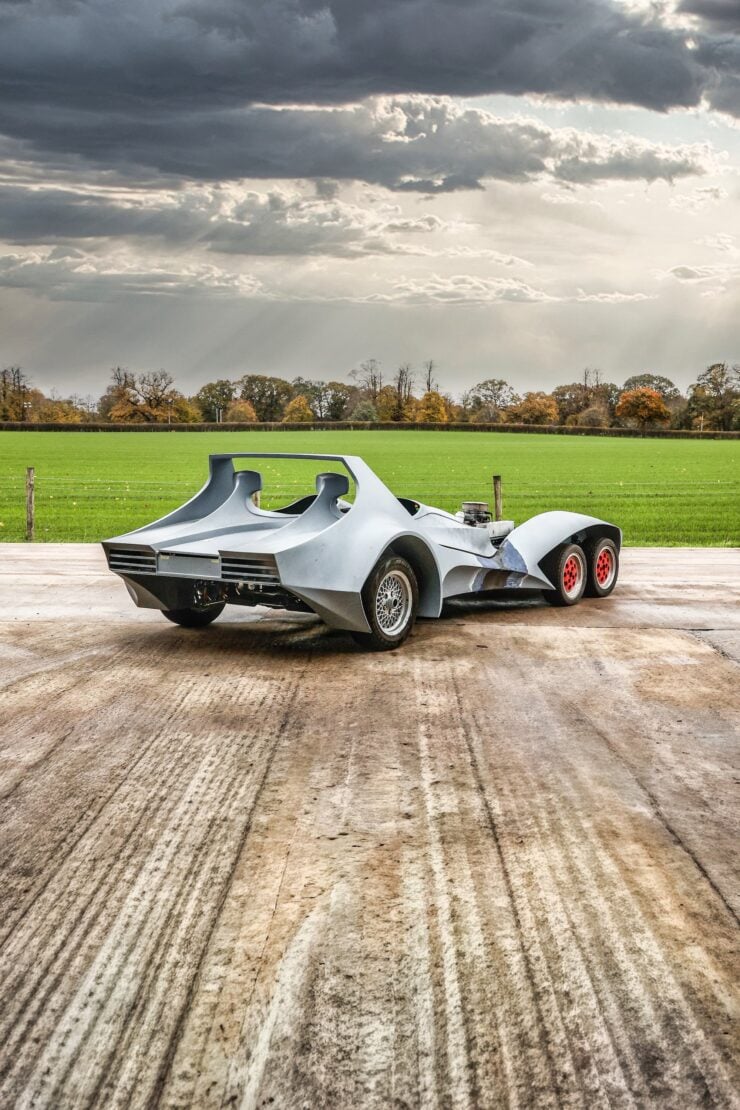

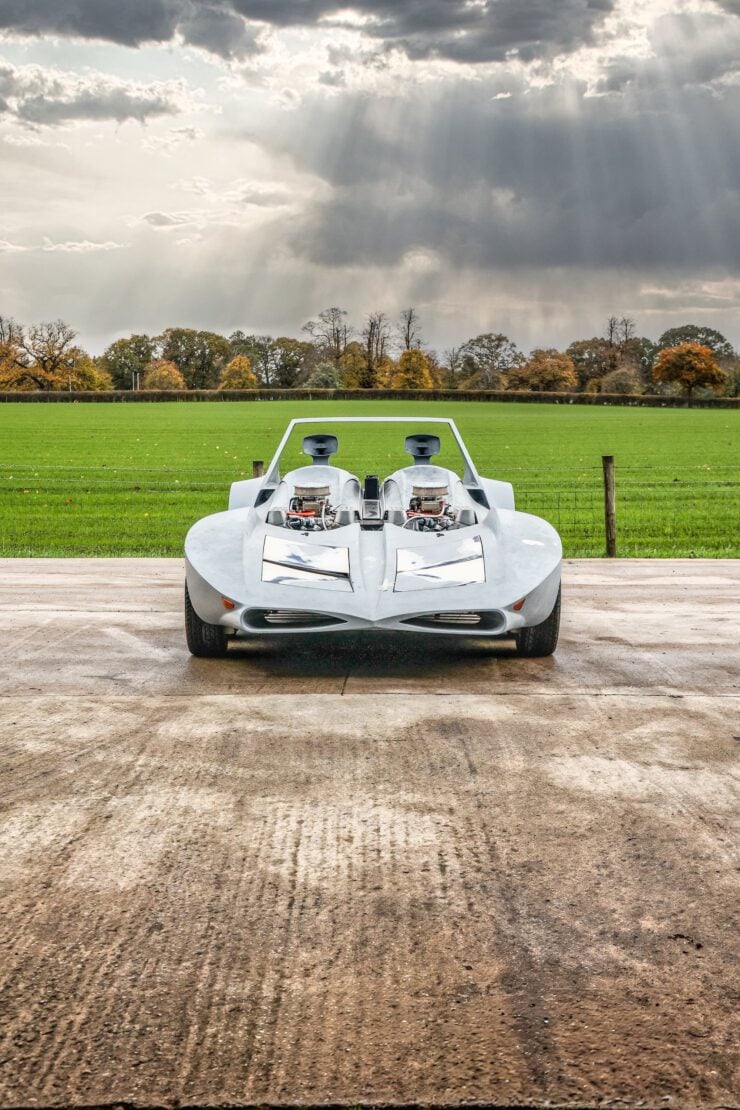
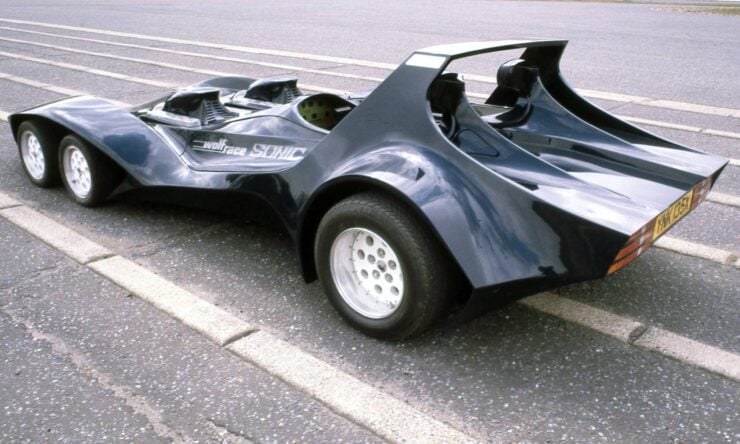
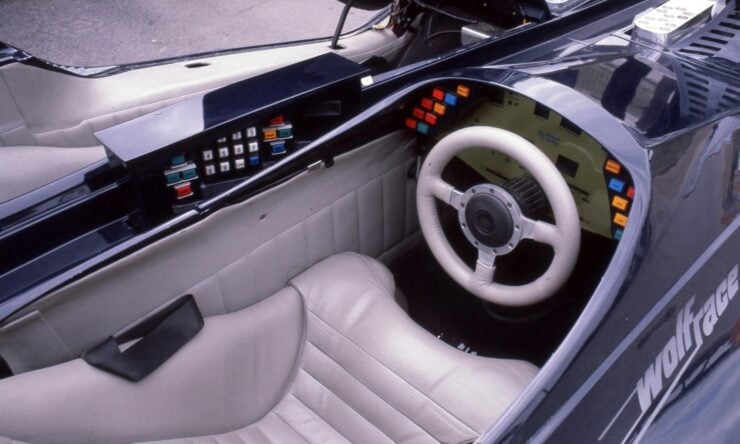
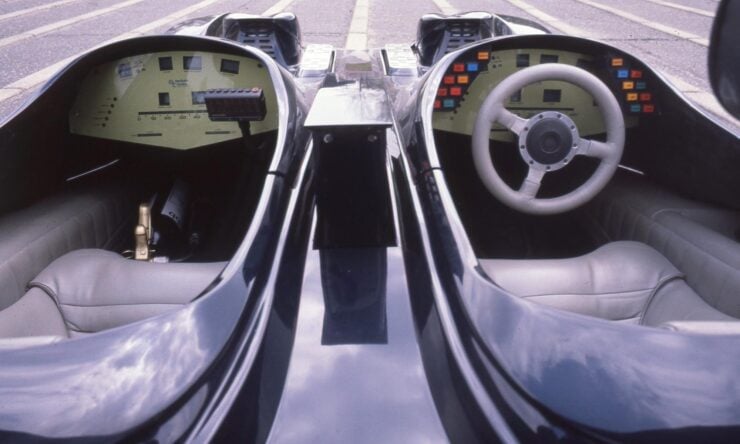

Images courtesy of Historics Auctioneers



